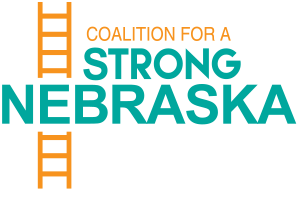We want to do everything we can to help kids learn. Too often, kids come to school hungry, leaving them unable to focus on their #1 job: learning. There is a new option – called “Community Eligibility” – available to high-poverty schools to ensure that hunger does not act as a barrier to learning during the school day.
The Community Eligibility Provision (CEP), part of the federal Healthy, Hunger-Free Kids Act of 2010, allows high-poverty schools to provide breakfasts and lunches at no charge to every student. To be eligible for CEP, school buildings must have a very high number of children who have already been identified as low-income or vulnerable (for example, they are eligible for other public assistance programs or Head Start, in foster care, migrant, homeless, or runaway).
CEP was phased in over time across the country and will now be available to Nebraska schools in the 2014-2015 school year. CEP has been incredibly successful for the early adopting states – increasing participation by children in school meal programs, reducing the administrative burden for schools, and increasing federal revenues into school districts. In short, it allows for a healthier student body and a healthier school meal budget.
Benefits of CEP for students, families, and schools include:
- Improved access to school meals, so hunger doesn’t act as a barrier to learning during the school day and so parents can count on their children eating two healthy meals at school.
- Reduced paperwork and administrative burden for schools by no longer collecting free/reduced lunch applications or managing the accounts for lunch payments.
- In many high poverty schools, some families may make just a bit more than the income limit for free/reduced meals but will still struggle to find that extra money in their limited food budgets – especially if they have more than one child in school. These families will no longer have to face the embarrassment of being unable to afford school breakfast and lunch for their children.
- With availability of school meals to all students, it eliminates the stigma faced by children who are eligible for free/reduced price meals.
- Research shows that students with reliable access to better nutrition tend to eat better and perform better academically.
http://youtu.be/LQr9CeUoDgA
(From our national partners at CBPP)
Community Eligibility in Nebraska
Nearly 100 school buildings in 25 different school districts across the state of Nebraska are eligible to participate in CEP. The Coalition for a Strong Nebraska is working with other anti-hunger advocates in our state to support implementation of this option in eligible schools across Nebraska. The deadline for schools to implement CEP for this upcoming school year is August 31, 2014. We will continue to work in collaboration with other advocates, school districts, elected officials, and the Nebraska Department of Education to encourage schools to elect CEP to accomplish our shared goal of making Nebraska schools hunger free.
What Can You Do?
You can help us make our schools hunger free by encouraging your own school district to pursue this option for high-poverty schools. To find out if there are school buildings in your district that are eligible for this option, check out the list provided by the Nebraska Department of Education (Column 6 indicates those schools that are eligible).
For more information on CEP:
The Nebraska Department of Education has put together a website full of great information.
Our national partners, the Center on Budget and Policy Priorities (CBPP) and Food Research and Action Center (FRAC), have put together a great in-depth overview on the Community Eligibility Provision, as well.
For more information on CEP, please feel free to contact the Coalition at info@strongnebraska.org.
